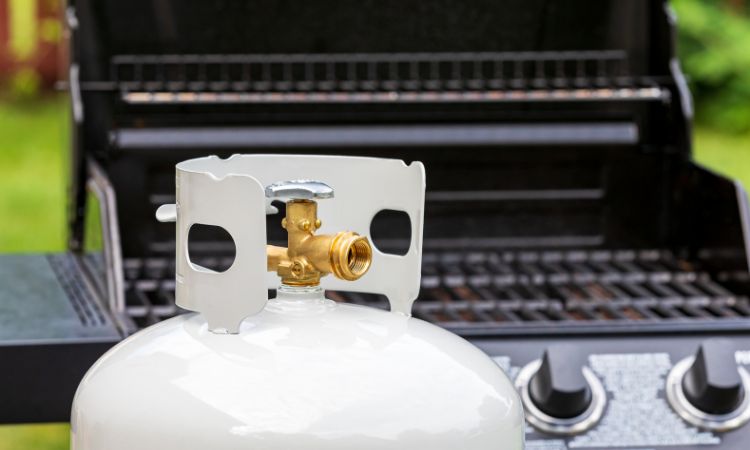The global propane market size is expected to grow in the forecast period of 2024-2032 at a CAGR of 4%. Propane, a vital component in the energy industry, plays a significant role in various applications, from residential heating to industrial uses. With rising demand for cleaner energy sources and increasing adoption of propane in sectors like transportation and commercial applications, the propane market is positioned for substantial growth in the coming years. This blog post will dive into the key drivers, market dynamics, and forecasts shaping the propane market during this period.
Understanding Propane and Its Versatility in Various Industries
Propane, a liquefied petroleum gas (LPG), is a byproduct of natural gas processing and crude oil refining. Known for its versatility, propane is used in a wide range of applications, including residential, commercial, transportation, and industrial sectors. The global market for propane is expanding due to its clean-burning properties, low cost, and growing use in emerging markets. As countries transition to cleaner energy sources, propane’s role as an efficient and sustainable alternative to traditional fuels like coal and oil has become increasingly vital.
End-Use Industry Analysis: Where Propane Is Being Used
Residential Applications
In residential settings, propane is widely used for heating, cooking, and powering appliances. It is particularly beneficial in rural areas where natural gas pipelines may not be available. Propane-powered appliances offer energy efficiency and reliability, making it an attractive option for homeowners. As energy costs continue to rise globally, the demand for propane in residential heating is expected to grow. Moreover, its use in water heaters, stoves, and dryers makes it a vital part of everyday life for millions of people.
Commercial Use
Propane is also a key energy source for commercial establishments, particularly in hospitality, retail, and small businesses. In the commercial sector, propane is used for heating, cooking, and as a backup power source. With businesses constantly seeking cost-effective solutions for energy consumption, propane offers a cleaner and more economical alternative to electricity or natural gas. In addition, propane-powered forklifts and material handling equipment are becoming increasingly common in warehouses and industrial facilities, contributing to the overall growth of the market.
Transportation
One of the fastest-growing applications for propane is in the transportation sector. Propane autogas, a clean-burning alternative to gasoline and diesel, is gaining traction, particularly in fleet vehicles, buses, and trucks. The adoption of propane as a transportation fuel has been driven by its environmental benefits—lower emissions of greenhouse gases—and its cost-effectiveness. Governments worldwide are providing incentives for fleets to switch to propane to meet stricter emissions standards, further supporting the growth of this segment. In regions like the United States and Europe, propane autogas is becoming a preferred choice for public transport systems and logistics companies looking to reduce their environmental impact.
Industrial Applications
Propane’s versatility also extends to a wide range of industrial applications. It is used as a fuel for manufacturing processes, including metal cutting, and in the agricultural industry for drying crops. The industrial sector’s dependence on propane for its efficiency and ability to perform in demanding environments ensures consistent demand for the fuel. As industries look for cleaner and more affordable alternatives to electricity and diesel, propane is set to see significant growth. Additionally, its use in the petrochemical industry as a feedstock for the production of ethylene and propylene further boosts its demand.
Other Uses
Aside from the traditional sectors, propane is also finding applications in other areas, including power generation and the petrochemical industry. In developing countries, propane is used for rural electrification and in cooking stoves, significantly contributing to improving the quality of life. With increasing investments in infrastructure and energy solutions, these emerging applications offer new growth opportunities in the global propane market.
Regional Analysis: Propane Market Trends by Region
North America
North America is the largest market for propane, with the United States being the primary consumer. Propane is extensively used in both residential and commercial sectors, as well as in transportation. The growth of propane as an alternative fuel in fleets and government incentives further fuel the market’s expansion. Additionally, the U.S. is one of the largest producers of propane, owing to its abundant natural gas resources, which enhances the region’s supply capabilities.
Europe
In Europe, the propane market is steadily growing, supported by the European Union’s focus on reducing carbon emissions and adopting cleaner fuels. Propane is increasingly used in heating applications, especially in countries where natural gas infrastructure is limited. As EU countries push for more sustainable energy solutions, propane’s role as a cleaner alternative to coal and oil is becoming more prominent. In addition, the transportation sector in Europe is increasingly shifting toward autogas, contributing to the overall market growth.
Asia-Pacific
Asia-Pacific is the fastest-growing region in the global propane market, driven by rapid industrialization, urbanization, and rising energy consumption. Countries like China and India are key markets for propane, where the fuel is used in residential heating, cooking, and transportation. The increasing demand for clean fuels and government initiatives to reduce pollution are expected to drive significant growth in this region. Additionally, propane’s growing popularity as an industrial fuel in Asia-Pacific further strengthens the region’s market share.
Latin America, Middle East, and Africa
In regions such as Latin America, the Middle East, and Africa, propane is playing an essential role in rural development and agriculture. Propane is used for power generation in remote areas, and its role in agriculture, such as crop drying, further supports its market presence. As these regions continue to develop economically, propane is expected to see increasing adoption in various sectors, especially in the residential and industrial applications.
Market Dynamics and Key Drivers
SWOT Analysis
- Strengths: Propane is a low-cost, reliable energy source with a diverse range of applications, from residential heating to transportation. Its cleaner burning properties make it an attractive option for environmental sustainability.
- Weaknesses: Propane’s market is tied to fluctuations in crude oil and natural gas prices, making it vulnerable to price volatility. Additionally, its reliance on infrastructure, such as storage tanks and distribution networks, can limit accessibility in certain regions.
- Opportunities: The growing shift towards cleaner energy solutions, particularly in transportation and industrial sectors, presents significant opportunities for the propane market. Emerging markets in Asia-Pacific and Africa also offer new growth prospects.
- Threats: Competition from alternative energy sources such as natural gas, electricity, and renewable energy solutions could slow down propane’s market growth.
Porter’s Five Forces Analysis
- Bargaining Power of Suppliers: Moderate, as propane production relies on natural gas and crude oil extraction, giving some power to suppliers.
- Bargaining Power of Consumers: High, with consumers having multiple alternatives for heating, transportation, and industrial fuel needs.
- Threat of New Entrants: Low, due to high capital investment and infrastructure requirements for propane production and distribution.
- Threat of Substitutes: Moderate, as propane faces competition from other energy sources like electricity, natural gas, and renewables.
- Industry Rivalry: High, with many players competing in the residential, commercial, and industrial propane markets.
Competitive Landscape
Key players in the global propane market include large corporations such as ExxonMobil, Royal Dutch Shell, Chevron, and Phillips 66, who are involved in both production and distribution of propane. These companies benefit from extensive infrastructure, which allows them to tap into global demand. Additionally, smaller regional players are competing by focusing on localized supply chains and providing specialized propane services for niche industries.




